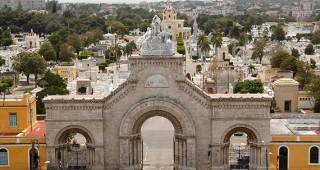
Santa María is the most popular beach among both Habaneros and visitors. It has lodgings, restaurants, watersports hire, grocery stores and a pharmacy. As with the other beahes, it boasts soft, white sand.

Santa María is the most popular beach among both Habaneros and visitors. It has lodgings, restaurants, watersports hire, grocery stores and a pharmacy. As with the other beahes, it boasts soft, white sand.

 5+
5+Constructed after the capture of Havana by British forces and named San Carlos de la Cabaña in honor of King Carlos III, this 700-meter long fortress is the largest in the Americas. It was designed by …

 5+
5+Along the banks of the Almendares River is Parque Almendares, also known as Bpsque de La Haband (Havana’s Forest). This is the only urban forest in the city and is a recreational area for Habaneros th …

 5+
5+The early city was formally founded in 1519 on the northeast side of what would soon be laid out as Plaza de la Iglesia—named for the simple church that stood here until 1741, when it was destroyed fo …

 5+
5+The narrow two-block long alley between Aramburu and Hospital streets in Centro Habana has over the years become a shrine to Afro-Cuban religions through the art created by Salvador González. The buil …

 5+
5+Right across Havana harbor, Plaza de San Francisco is one of the first three built in the 16th century. It takes its name from the Franciscan convent built there. The plaza became the site of a market …

 5+
5+The last of the main squares to be created, this is one of Old Havana’s most beautiful spots. Originally, it was named Plaza de la Ciénaga (Swamp Square) because of its muddy terrain, but by the 18th …

 5+
5+In response to the increasing influx of American tourists in the late 20s (mainly those who were escaping Prohibition, in force in the United States at the time), the construction of a luxury hotel wa …
 Eclectic
Eclectic $61 - $81ROOMS: 426O esquina a 21
$61 - $81ROOMS: 426O esquina a 21 
 5+
5+History & architecture Declared National Monument in 1987, this is the most important cemetery in Cuba and its 57 hectares (10 acres) makes it the largest in America. According to Enrique Martínez …
 EclecticAdmission: CUC 1Open: 9am-5pm dailyZapata y 12
EclecticAdmission: CUC 1Open: 9am-5pm dailyZapata y 12 
 5+
5+The entry of the Jesuits in Cuba was formally requested in 1656, and in 1727, a plot was granted for their school and church. Bishop Brother Gerónimo Valdés explained to the King of Spain that Havana’ …
 BaroqueAdmission: FreeOpen: 10:30am-3pm Mon-SunEmpedrado #156 e/ San Ignacio y Mercaderes, Habana Vieja
BaroqueAdmission: FreeOpen: 10:30am-3pm Mon-SunEmpedrado #156 e/ San Ignacio y Mercaderes, Habana Vieja 
 5+
5+The Malecón, first named Avenida del Golfo, is Cuba’s most famous sea-side avenue. The project was undertaken by Don Francisco de Albear, Cuba’s greatest engineer at the time. Albear came up with a co …